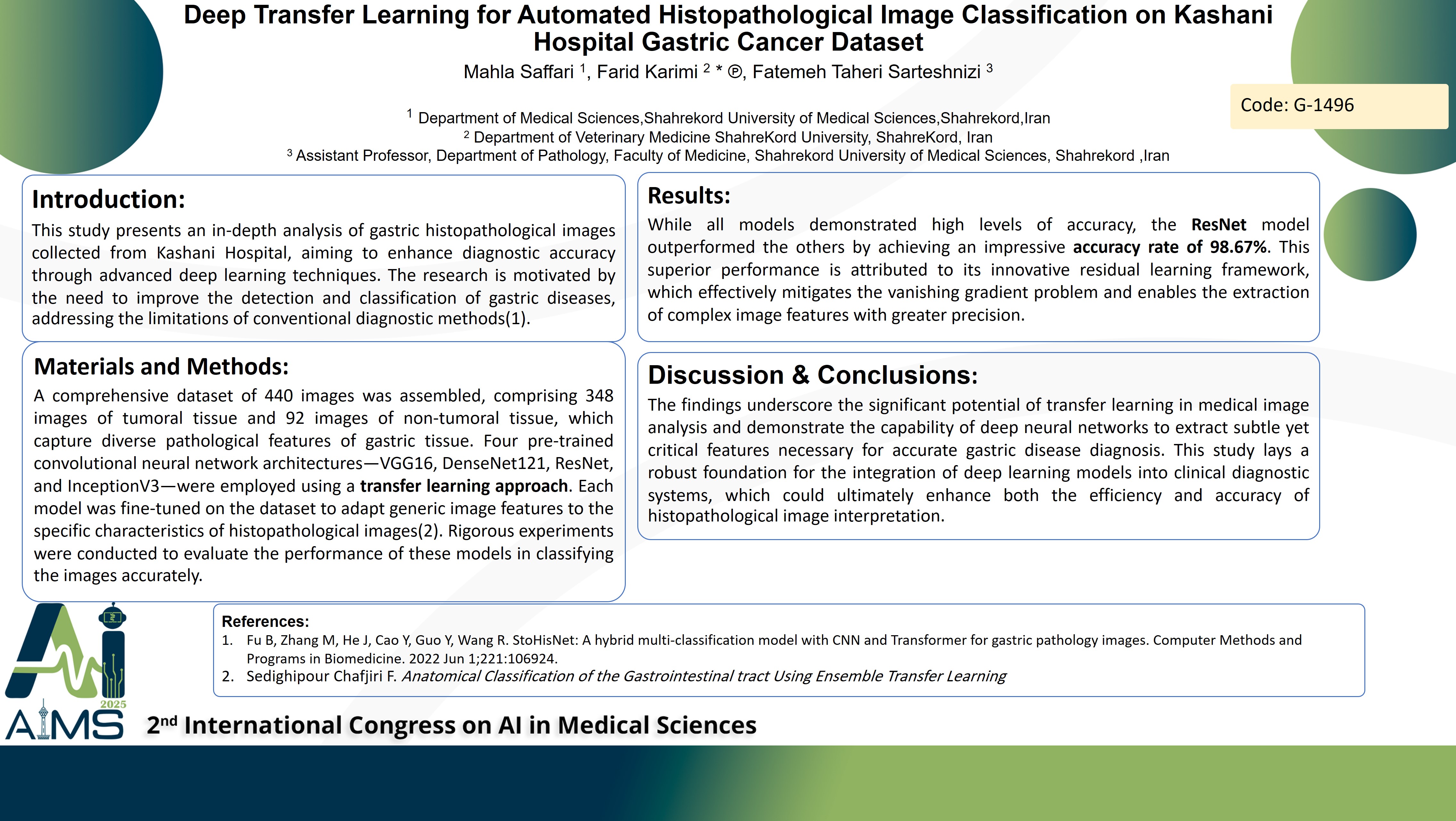Deep Transfer Learning for Automated Histopathological Image Classification on Kashani Hospital Gastric Cancer Dataset
Code: G-1496
Authors: Mahla Saffari, Farid Karimi * ℗, Fatemeh Taheri Sarteshnizi
Schedule: Not Scheduled!
Tag: Biomedical Signal Processing
Download: Download Poster
Abstract:
Abstract
Background and aims: This study presents an in-depth analysis of gastric histopathological images collected from Kashani Hospital, aiming to enhance diagnostic accuracy through advanced deep learning techniques. The research is motivated by the need to improve the detection and classification of gastric diseases, addressing the limitations of conventional diagnostic methods. Method: A comprehensive dataset of 440 images was assembled, comprising 348 images of tumoral tissue and 92 images of non-tumoral tissue, which capture diverse pathological features of gastric tissue. Four pre-trained convolutional neural network architectures—VGG16, DenseNet121, ResNet, and InceptionV3—were employed using a transfer learning approach. Each model was fine-tuned on the dataset to adapt generic image features to the specific characteristics of histopathological images. Rigorous experiments were conducted to evaluate the performance of these models in classifying the images accurately. Results: While all models demonstrated high levels of accuracy, the ResNet model outperformed the others by achieving an impressive accuracy rate of 98.67%. This superior performance is attributed to its innovative residual learning framework, which effectively mitigates the vanishing gradient problem and enables the extraction of complex image features with greater precision. Conclusion: The findings underscore the significant potential of transfer learning in medical image analysis and demonstrate the capability of deep neural networks to extract subtle yet critical features necessary for accurate gastric disease diagnosis. This study lays a robust foundation for the integration of deep learning models into clinical diagnostic systems, which could ultimately enhance both the efficiency and accuracy of histopathological image interpretation.
Keywords
Deep Learning, Transfer Learning, Histopathology
